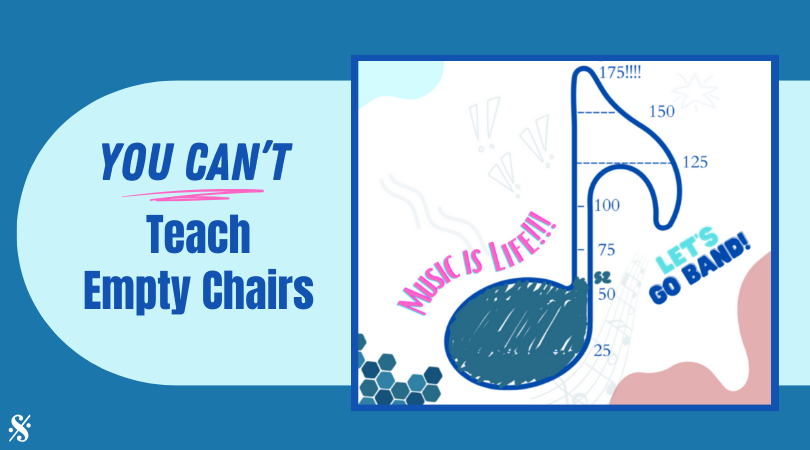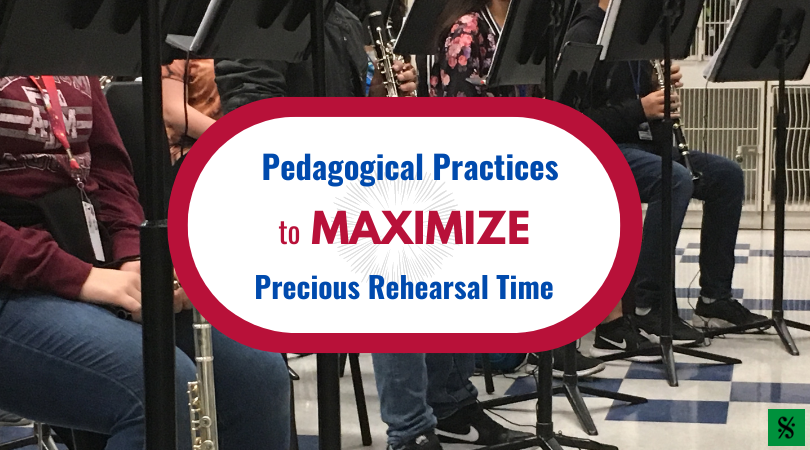
Developing the best tone quality is essential when getting your students ready for any performance. Having the best tone quality every time is what a student should be thinking when they play their instrument. Many band directors say, “You can’t tune a bad tone.” Think about that for a minute. If a student does not possess a good quality of sound, it will be very hard to play in tune. This will make things hard for the student, ensemble, and teacher. Alternate fingerings will only go so far.
To get the sound you want for your group, you have to first conceptualize what you want your group to sound like. First, pick your favorite wind band you enjoy hearing. For me, I enjoy listening to the Dallas Winds. I love the resonance the band makes. You can hear all of the sonorities on every chord especially when the band releases together. It is awe-inspiring. I love the richness of the low brass and how it fuses with the timbre of the woodwinds. With all of these images I have in my head, I try to recreate that with my band. However, the concept alone is not enough. Now we start our tone training to develop that sound you want with your group.
Start by having your students sit with proper posture. Both feet flat on the floor, back away from the chair, and sit up straight. You must insist that students play with a proper posture. With a proper posture, student’s airflow will be much faster and easier to control. Poor airflow is a factor that contributes to intonation issues.
Once students have the correct posture. Use breathing exercises in your daily warm-up so students know how to control their airflow.
Exercise 1. Breathing tubes. Use ½-inch ball valves.

Set the metronome to quarter note equals 90. Do each one at least two times each.
- Breathe in for 4 out for 4
- Breathe in for 4 out for 8
- Breathe in for 4 out for 12
- Breathe in for 4 out for 16

Have students hold the knob with their hand and blow into the tube. Breathing in and out should be seamless and natural. Students’ shoulders should be down and relaxed. To increase resistance turn the knob a quarter turn.
Exercise 2: Balloons
Set the metronome to quarter note equals 90. Do each one at least two times each.
- 1 deep breath in and out for 4
- 1 deep breath in and out for 8
- 1 deep breath in and out for 12
- 1 deep breath in and out for 16

Humming and singing.
Students will take their right hand and put it over their chest. The teacher will play an F concert drone note. Have the students listen and hum. They should feel the vibration on their chest. While the student is humming the director will cue the students to open their mouth and sing using an “AH” syllable matching the F concert pitch. Remove the drone note until student can visualize the pitch and match it by singing.

Long tones
Use a Remington warm-up that is easy for students to perform. Make sure each note sounds resonant. Each note is balanced and there are no bumps going from one note to the other. The student’s jaw must be still so the tone is even.

F around the room
This is a great exercise to use with your band. This is a must-have in your arsenal. I recommend you start with the section that sounds the best. From there, have each section play an F concert for 8 counts with an even sound all the way through. Transferring their sound to the next section. Each section is responsible to listen to the section that is playing before them so they can replicate that sound. The students need to listen to their section and match their sound volume, pitch, and energy.

- Group 1. Flute/oboe
- Group 2. Clarinet
- Group 3. Alto Saxophone/French Horn
- Group 4. Trumpets
- Group 5. Low brass/Low reeds
Chorales
Lastly, chorales are a great way for students to listen for balance, blend, and intonation. Make sure students are listening to the low brass and blending their sound inside the low brass sound. This will give your band a dark and resonant tone quality.
Example: Bach Chorale

Rumaldo Solis is the Director of Bands at James Bowie High School in Arlington, Texas. His bands and marching bands have been consistent 1st division award winners in UIL competition. His wind symphony has been a commended winner for the national Mark of Excellence Project and has been a featured performer in the Western International Band Clinic in Seattle, Washington.
Related Reading:
Why Doesn’t My Band Sound Good?
Sound is Caught, Not Taught
Clarinet Tone Production
If you would like to receive our weekly newsletter, sign up here.
Don’t forget to like us on Facebook too!
Learn. Share. Inspire.





Leave a Reply
You must be logged in to post a comment.